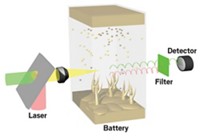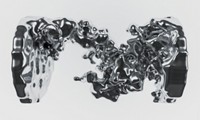Advertisement
Grab your lab coat. Let's get started
Welcome!
Welcome!
Create an account below to get 6 C&EN articles per month, receive newsletters and more - all free.
It seems this is your first time logging in online. Please enter the following information to continue.
As an ACS member you automatically get access to this site. All we need is few more details to create your reading experience.
Not you? Sign in with a different account.
Not you? Sign in with a different account.
ERROR 1
ERROR 1
ERROR 2
ERROR 2
ERROR 2
ERROR 2
ERROR 2
Password and Confirm password must match.
If you have an ACS member number, please enter it here so we can link this account to your membership. (optional)
ERROR 2
ACS values your privacy. By submitting your information, you are gaining access to C&EN and subscribing to our weekly newsletter. We use the information you provide to make your reading experience better, and we will never sell your data to third party members.
Analytical Chemistry
3-D View Inside A Battery
MRI method generates diagnostic images that reveal normally hidden details of electrodes and electrolytes
by Mitch Jacoby
February 20, 2012
| A version of this story appeared in
Volume 90, Issue 8
Peeking inside batteries while the devices are being charged or discharged could lead to electrochemical insights that enable researchers to design safer and longer-lasting batteries. But getting an up-close view of a working battery has been notoriously difficult. Scientists may now be able to get such a view by using a 7Li magnetic resonance imaging (MRI) technique developed by Srinivasan Chandrashekar and Alexej Jerschow of New York University; Clare P. Grey of Cambridge University and the State University of New York, Stony Brook; and coworkers (Nat. Mater., DOI: 10.1038/nmat3246). The method provides a noninvasive way to visually monitor changes in battery components that have traditionally been inaccessible to diagnostic methods. The team showed that MRI can reveal the existence of lithium deposits (dendrites) that grow and extend into the region between electrodes when a test cell is charged. Buildup of such microstructures has been identified as a key factor triggering short circuits in lithium batteries. The team notes that the method can be used to monitor other types of undesirable lithium deposits, the techniques for dispersing them, and their dependence on charge rates, discharge rates, and other battery parameters.





Join the conversation
Contact the reporter
Submit a Letter to the Editor for publication
Engage with us on Twitter